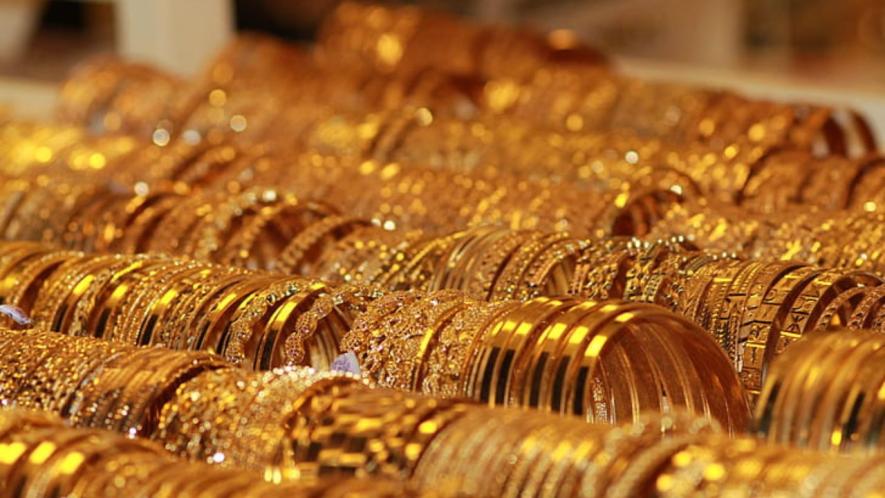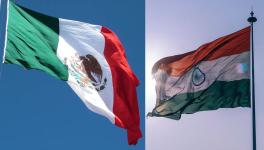Paper to Metal? New Currency Trends Challenge Dollar’s Reign

Representational Image. Image Courtesy: PickPik
The global financial order is being redrawn in real time. After nearly eight decades of US dollar’s supremacy, the world economy is steadily transitioning toward a multipolar, asset-backed monetary system. This transformation—long in gestation—has accelerated sharply in 2025, as nations seek refuge in tangible assets amid rising geopolitical tensions, unsustainable sovereign debt, and mounting disillusionment with fiat currencies (Eichengreen, 2019; Stiglitz, 2023).
The era of unchallenged dollar hegemony—constructed upon post-war American industrial might and institutional dominance—appears to be entering its twilight. In its place emerges a new monetary architecture: anchored by gold, diversified through regional currencies, and guided more by economic pragmatism than ideological allegiance (Krugman, 2024).
Gold’s Resurgence in a Shifting Monetary World
Long dismissed as an anachronistic store of value, gold has reasserted its primacy amid monetary uncertainty. In an age of overleveraged economies and politicized central banking, the metal once deemed a “barbarous relic” (Keynes, 1936) has re-emerged as a neutral, borderless form of money—immune to the distortions of fiat experimentation.
Silver, too, is reclaiming its dual role as both industrial input and monetary hedge, offering protection against inflation and currency depreciation. For sovereign wealth funds and institutional investors alike, precious metals symbolise stability in a world defined by volatility (World Gold Council, 2025).
Over the past year, macroeconomic fundamentals have tilted decisively in gold’s favour. Persistent geopolitical flashpoints, sustained inflationary pressures, erratic US trade policies, and a prolonged Federal Reserve easing cycle have coalesced to propel gold’s ascent. The global movement toward de-dollarisation has only intensified this surge (IMF Global Outlook, 2025).
The recent, protracted US government shutdown further eroded investor confidence in Washington’s fiscal prudence. Gold prices have surged by more than 50% since January, surpassing an unprecedented $4,000 per ounce in London trading—an inflection point few foresaw a decade ago. Analysts now project sustained momentum as central banks and asset managers rebalance portfolios away from dollar-denominated securities (Bloomberg, 2025).
China at the Heart of the Gold Rush
At the epicentre of this monetary realignment stands China. The world’s second-largest economy has quietly assumed the role of chief architect in reshaping global finance. The People’s Bank of China (PBoC) has expanded its gold reserves for 11 consecutive months, signaling Beijing’s determination to insulate itself from the vulnerabilities of a dollar-centric system (PBoC Data Bulletin, 2025).
In September 2025 alone, the PBoC added 40,000 ounces, lifting total holdings to 74.06 million ounces—valued at roughly $283.3 billion. Far from symbolic, this accumulation represents a strategic recalibration aimed at enhancing the yuan’s credibility as a trade-settlement currency while reducing reliance on volatile US Treasuries.
According to Torsten Slok, Chief Economist at Apollo Global Management, “China has become the single most influential driver of the global gold rally. Its influence extends beyond central-bank activity to household demand, arbitrage trading, and institutional diversification. This is not reactionary—it is a coordinated national strategy” (Slok, 2025).
Beijing’s long-term foresight reflects monetary realism: “Gold will touch ₹1,77,000 per 10 grams within two years,” Slok forecasts, underscoring China’s conviction in a structurally shifting monetary order.
A Strategic Pivot Away from the West
China’s gold accumulation doubles as a geopolitical declaration. It signals a deliberate pivot away from Western-dominated financial architectures increasingly vulnerable to sanctions, sovereign debt crises, and political interference (Allison, 2024).
Through initiatives such as the Belt and Road Initiative (BRI) and the Cross-Border Interbank Payment System (CIPS)—Beijing’s alternative to the US-controlled SWIFT network—China seeks to internationalise the yuan and secure monetary autonomy. Its gold-based strategy rests on two interlocking pillars:
One, a managed, weaker yuan to sustain export competitiveness and liquidity; and two, expanding bullion reserves to hedge systemic risks and enhance credibility.
Together, these form a dual-layered safety net—fortifying China’s resilience amid domestic and global turbulence. The underlying message is clear: financial sovereignty will no longer be mediated through Western institutions alone.
Why China’s Gold Strategy Matters
Beijing’s approach exemplifies the fusion of monetary prudence and geopolitical foresight. Its rationale is multifaceted:
- De-dollarisation: Reducing exposure to US Treasuries mitigates sanctions and contagion risk.
- Currency Hedge: A weaker yuan elevates local gold valuations, strengthening national balance sheets.
- Credibility: Larger gold holdings enhance global confidence in the yuan as a trade medium.
- Sanction Shield: Physical gold remains beyond the reach of digital freezes or asset seizures.
- Diversification: Gradual reallocation from US bonds to bullion reduces liquidity and policy dependence.
- Economic Insurance: Gold provides a tangible hedge against cyclical downturns.
This playbook is now closely studied by emerging economies across Asia, Africa, and West Asia, signalling a paradigm shift in reserve management (WGC, 2025).
Within this trend, the People’s Bank of China (PBoC) has spearheaded a technological innovation: the e-CNY, a digital extension of the renminbi (RMB). Beyond its domestic role in financial inclusion, the e-CNY is increasingly positioned as a vehicle for cross-border settlement — a development that directly intersects with BRICS’ broader goal of building an alternative financial order (Eichengreen & Mehl, 2023).
In 2025, the PBoC reaffirmed its ambition to internationalise the e-CNY and promote “a more multipolar currency system” (Reuters, 2025). The central bank’s digital initiative has been operationalised through a series of pilot programs, including the mBridge project — a multi-CBDC cross-border platform jointly developed by the PBoC, the Bank of Thailand, the Central Bank of the United Arab Emirates, and the Hong Kong Monetary Authority (Bank for International Settlements [BIS], 2024).
CBDC-based transactions could reduce settlement latency and intermediary costs compared to SWIFT-based transfers (Settlements, 2024). While exaggerated claims of “seven-second” settlements or “98 percent fee reductions” circulate in popular discourse, peer-reviewed documentation indicates only that transaction times and costs were significantly improved under the prototype (Insights, 2024).
Such developments suggest that China is laying the foundation for an alternative payment ecosystem — one that could enable cross-border settlements directly between central banks, bypassing Western financial intermediaries.
The Global Ripple Effect
China’s assertive accumulation has catalysed a global realignment. Central banks from Turkey, Russia, India, and Brazil are expanding bullion holdings at the fastest pace in five decades. According to the World Gold Council (2025), central-bank demand reached record highs—surpassing even the peaks of the 1970s oil crises.
This synchronised diversification reflects a broader recalibration of global reserves. Nations are preparing for a post-dollar world where liquidity and trade no longer hinge on a single currency.
Cryptocurrencies, once touted as fiat alternatives, have failed to match gold’s reliability or universality. Volatility, fragmented regulation, and inconsistent adoption have confined digital assets to the financial periphery (BIS, 2024). Consequently, an implicit, modernised gold standard is quietly re-emerging.
America’s Debt Spiral and Waning Confidence
Meanwhile, the US—the historical anchor of global finance—is mired in fiscal instability. As of October 2025, US national debt exceeded $38 trillion, marking the steepest rise outside pandemic conditions. Projections suggest a climb toward $50 trillion by 2030, driven by chronic deficit financing and political gridlock (US Treasury, 2025).
This debt trajectory erodes fiscal credibility and undermines the dollar’s perceived safety. As one senior Asian central banker told The South Asia Times anonymously, “When the world’s most powerful currency can be held hostage to domestic politics, it sends a message to the rest of us: the age of unquestioned trust in the dollar is over.”
A Multi-Polar Financial Architecture Emerges
What is unfolding is not a cyclical correction but a structural transformation—from a unipolar, dollar-centered model to a multipolar, asset-backed system. The expansion of the BRICS bloc—now including Saudi Arabia, Iran, and Egypt—has accelerated this evolution. Member states are exploring gold-linked trade settlements that bypass the dollar in regional commerce (BRICS Secretariat, 2025).
In 2001, over 85% of global trade was invoiced in US dollars. By 2025, that share has fallen below 60%, with the euro, yuan, and regional currencies capturing growing portions. The shift mirrors the geopolitical pluralism of the 21st century—a world where no single nation wields uncontested financial authority.
India’s Strategic Opportunity
Amid this reordering, India stands uniquely poised—aligned neither wholly with the West nor within China’s orbit. As one of the world’s fastest-growing economies, India’s 9.5% projected Compounded Annual Growth Rate or CAGR (2025–2030) underscores its potential as both participant and beneficiary of asset-backed finance (RBI Economic Bulletin, 2025).
The Reserve Bank of India (RBI) has incrementally expanded its gold reserves while exploring mechanisms to enhance the rupee’s role in cross-border settlements. Policy dialogues on gold-backed sovereign instruments and digital bullion integration are gaining momentum.
For Indian investors, this confluence—gold appreciation, rupee depreciation, and structural liquidity growth—could propel domestic gold prices toward ₹1,77,000 per 10 grams within two years. Beyond economics, gold’s dual identity in India—as both cultural heirloom and strategic asset—signifies its role in national resilience.
A World Reanchored in Real Value
At its core, this transformation reflects a philosophical correction: global trust is shifting from promises to proof, from paper to metal. In an era of fiscal instability and institutional erosion, tangible assets are reclaiming their status as ultimate stores of value.
The post–Bretton Woods assumption—that value derives from decree rather than substance—is under strain. Stability, nations are rediscovering, cannot be printed; it must be held. Sovereignty and credibility, once secured through words, are now weighed in ounces.
Looking Ahead
As the US contends with debt spirals and political dysfunction, the rest of the world is preparing for a post-dollar epoch. China’s gold accumulation, India’s ascent, and the accelerating de-dollarisation wave collectively define a new financial paradigm.
The dollar’s dominance will not vanish overnight, but its decline is unmistakable—a gradual redistribution of monetary influence from a single hegemon to a constellation of nations grounded in real, asset-backed value.
As one veteran economist at the RBI observed, “The next chapter of global finance will not be written in Washington—it will be minted in gold.”
The writer is International Professor of Economics and Author. He is also Director of Global South Social Networks & Researching Sustainable Economic Development and the Political Economy of the Global South. The views are personal.
Get the latest reports & analysis with people's perspective on Protests, movements & deep analytical videos, discussions of the current affairs in your Telegram app. Subscribe to NewsClick's Telegram channel & get Real-Time updates on stories, as they get published on our website.























